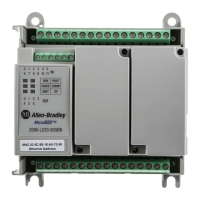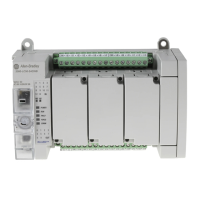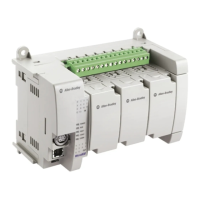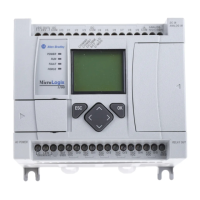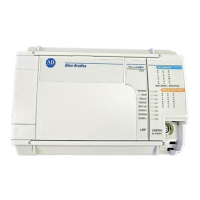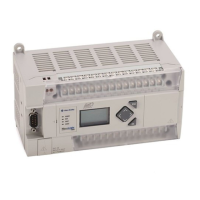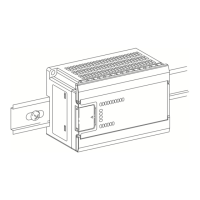Communication instructions Chapter 9
Rockwell Automation Publication 2080-RM001D-EN-E - February 2015 191
CIPSTATUS data type
The following table describes the CIPSTATUS data type.
Parameter Data type Description
Error BOOL This bit is set to TRUE when the function block execution encounters an error condition.
ErrorID UINT Error code value.
See CIPSTATUS error codes on page 179.
SubErrorID UINT Sub Error code value.
See CIPSTATUS error codes on page 179.
ExtErrorID UINT CIP extended status error code value.
StatusBits UINT This parameter can be used to verify control bits:
• Bit 0: EN – Enable
• Bit 1: EW – Enable Wait
• Bit 2: ST – Start
• Bit 3: ER – Error
• Bit 4: DN – Done
• Other bits are reserved
• See CIPSTATUS status bits on page 178.
CIPSTATUS status bits
The CIPSTATUS status bits are set based on the status of the message execution,
the communication buffers, and the rung conditions.
- - - - - - - - - - - 4 3 2 1 0
Bit Name Description Behavior
0 EN Enable Set when the rung goes true and remains set until either the DN bit or the ER bit is set and the rung goes false.
1 EW Enable Waiting Set when the communication buffer is allocated for the message request. Cleared when the ST bit is set.
2 ST Start Set when the message has been transmitted and is waiting for a reply. Cleared when the DN bit is set.
3 ER Error Set when message transmission fails. An error code is written to ErrorID. The ER bit and error code values are cleared the next
time the rung goes from false to true.
4 DN Done Set when the message is transmitted successfully. The DN bit is cleared the next time the rung goes from false to true.
When the Done bit is set, all other bits are cleared to indicate the MSG completed successfully. When an error is detected and
the Error bit is set, the other status bits (EN/EW/ST) are not cleared.
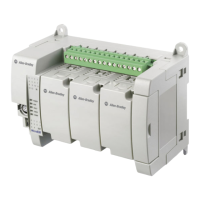
